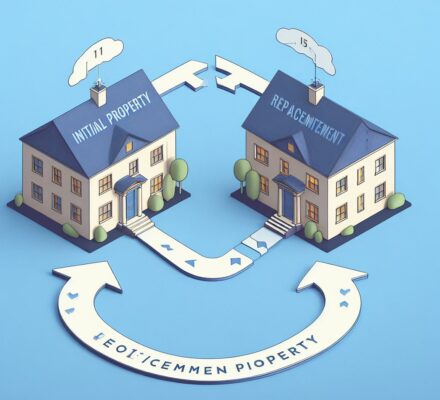Like a skilled chess player, you must anticipate every move in the game of tax planning.
In the world of 1031 exchanges, understanding the importance of avoiding gain recognition is crucial. By deferring capital gains taxes and maximizing potential savings, you can navigate the complex terrain of real estate transactions with ease.
However, failing to avoid gain recognition could lead to undesirable consequences.
In this article, we will explore strategies for a successful 1031 exchange and why you should care about avoiding gain recognition.
Key Takeaways
- Avoiding gain recognition in a 1031 exchange allows for the deferral of taxes on investment property.
- By avoiding gain recognition, investors can keep more money in their pocket in the short term and reinvest funds into another qualifying property.
- Deferring capital gains taxes through a 1031 exchange allows investors to have more capital available to invest in additional properties and potentially achieve higher returns over time.
- Not avoiding gain recognition can result in paying capital gains tax, limiting the ability to reinvest the full proceeds into new property and hindering the ability to maximize investments and potential returns.
The Benefits of Avoiding Gain Recognition
By avoiding gain recognition in a 1031 exchange, you can benefit from deferring taxes on your investment property. The main advantage of deferring gain recognition is that it allows you to keep more money in your pocket in the short term. Instead of paying taxes on the capital gains from the sale of your property, you can reinvest those funds into another qualifying property within the designated time frame. This means that you can defer the tax payment until you eventually sell the replacement property, potentially years down the line.
The deferred taxes can have a significant impact on your cash flow and overall investment strategy. By deferring the tax payment, you have more capital available to invest in additional properties, which can help you to grow your real estate portfolio and increase your potential returns. This can be especially beneficial for investors who are looking to take advantage of market opportunities or diversify their investments.
Furthermore, by deferring gain recognition, you may also have the opportunity to benefit from the time value of money. Since you’re able to keep the tax payment within your investment portfolio, you have the potential to earn additional income through interest, dividends, or other investment gains. This can further enhance the overall return on your investment and contribute to your long-term financial goals.
Deferring Capital Gains Taxes
To continue benefiting from deferring taxes on your investment property, you can achieve this by deferring capital gains taxes in a 1031 exchange. A 1031 exchange allows you to reinvest the proceeds from the sale of your property into a like-kind property while deferring the payment of capital gains taxes. This is a powerful tax strategy that enables you to maximize your investment returns and preserve your capital.
By deferring capital gains taxes, you can keep more of your money working for you in the real estate market. Instead of paying taxes on the gains from the sale of your property, you can reinvest those funds into a new property, allowing you to grow your real estate portfolio and potentially increase your cash flow and wealth.
One of the key advantages of deferring capital gains taxes through a 1031 exchange is the ability to compound your investment returns. By deferring taxes, you can reinvest the full amount of the proceeds from the sale of your property, rather than having a portion of it go towards taxes. This can have a significant impact on the growth of your investment over time.
Furthermore, by deferring capital gains taxes, you can also achieve a higher return on investment compared to selling your property and paying taxes. This is because the money that would have gone towards taxes can now be reinvested, allowing you to generate additional income and potentially appreciate the value of your investment property.
Potential Savings From Gain Recognition Avoidance
To maximize your potential savings in a 1031 exchange, it is important to understand the benefits of avoiding gain recognition. By deferring the recognition of capital gains, you can keep more of your investment funds working for you. When you sell a property and reinvest the proceeds into a like-kind property, you can defer the capital gains taxes that would otherwise be due. This allows you to maintain a greater amount of capital to reinvest in a new property, potentially leading to higher returns in the long run.
To illustrate the potential savings from gain recognition avoidance, let’s consider the following hypothetical scenario:
| Scenario | Gain Recognition | No Gain Recognition |
|---|---|---|
| Sale Price | $500,000 | $500,000 |
| Cost Basis | $300,000 | $300,000 |
| Capital Gains Taxes | $70,000 | $0 |
| Remaining Capital | $430,000 | $500,000 |
As shown in the table above, by avoiding gain recognition, you can retain the full $500,000 to invest in a new property. On the other hand, if you recognize the gain, you would have to pay $70,000 in capital gains taxes, leaving you with only $430,000 to reinvest. This $70,000 difference could have a significant impact on your future investment opportunities and potential returns.
Consequences of Not Avoiding Gain Recognition
Failing to avoid gain recognition in a 1031 exchange can have significant tax implications. When you sell a property and recognize gain, you’re required to pay taxes on that gain. In a 1031 exchange, the purpose is to defer those taxes by reinvesting the proceeds into a like-kind property. However, if you fail to meet the requirements of a 1031 exchange and recognize gain, you’ll be subject to immediate taxation on that gain.
One consequence of not avoiding gain recognition is that you’ll have to pay capital gains tax. This tax can be substantial, especially if you have owned the property for a long time and have accumulated significant gains. The tax rate for capital gains can range from 0% to 20%, depending on your income level.
In addition to the tax consequences, failing to avoid gain recognition may also limit your ability to reinvest the full proceeds from the sale of your property into a new property. This can hinder your ability to maximize your investments and potentially reduce your overall returns.
It is important to carefully follow the rules and requirements of a 1031 exchange to avoid these potential consequences and enjoy the benefits of tax deferral and continued investment growth.
Strategies for a Successful 1031 Exchange
If you want to ensure a successful 1031 exchange, consider implementing these effective strategies:
- Plan ahead: Before initiating a 1031 exchange, it’s crucial to have a clear plan in place. Identify your goals, determine your timeline, and research potential replacement properties. This will help streamline the process and minimize any potential setbacks.
- Engage a qualified intermediary: A qualified intermediary (QI) plays a vital role in facilitating a 1031 exchange. They’ll ensure compliance with IRS regulations, handle the necessary paperwork, and hold the funds during the exchange period. Engaging a reliable and experienced QI is essential to avoid any missteps.
- Identify suitable replacement properties: Take the time to identify replacement properties that align with your investment objectives. Conduct thorough due diligence, analyze market trends, and evaluate the potential for growth and income. Finding suitable replacement properties will help maximize the benefits of your 1031 exchange.
- Consult with professionals: Seek advice from professionals such as tax advisors, real estate attorneys, and financial planners who specialize in 1031 exchanges. They can provide valuable insights and help navigate complex tax regulations, ensuring a smooth and successful exchange.
Frequently Asked Questions
What Is a 1031 Exchange and How Does It Work?
A 1031 exchange allows you to defer capital gains taxes when selling an investment property and buying a like-kind property. It’s a valuable tax strategy that can help you preserve and grow your wealth.
Can I Use a 1031 Exchange for Any Type of Property?
You can use a 1031 exchange for any type of property, such as real estate or land. It allows you to defer taxes and reinvest your gains into a similar property, like a puzzle piece fitting perfectly into place.
Are There Any Time Limits or Deadlines for Completing a 1031 Exchange?
There are specific time limits and deadlines that you must adhere to when completing a 1031 exchange. Failure to meet these requirements can result in gain recognition and potential tax consequences.
Is It Possible to Partially Defer Capital Gains Taxes Through a 1031 Exchange?
Yes, you can partially defer capital gains taxes through a 1031 exchange. By exchanging your property for a like-kind property, you can defer taxes on the gain, allowing you to reinvest more.
How Does the IRS Determine the Fair Market Value of the Properties Involved in a 1031 Exchange?
When determining the fair market value of properties in a 1031 exchange, the IRS considers various factors such as appraisals, sales data, and market conditions. It is important to understand this process to ensure compliance and avoid gain recognition.




